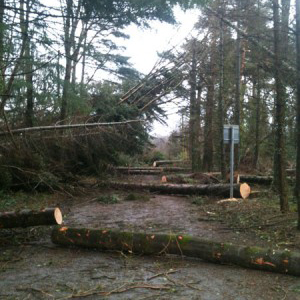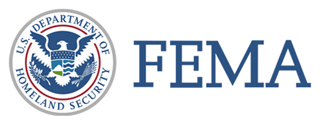Emergency Services
 Local governments are depended upon to be the first responders who deliver emergency services to their residents in the initial 72 hours following an incident. In order to be able to do this, it is critical that the community have a disaster management plan in place. Usually this plan includes a contract with a qualified disaster management firm such as GreenCo. We assist communities in preparing and updating their disaster management plans. Our GreenCo professionals are also part of the emergency response teams for several communities throughout the Gulf Coast region. In disaster events involving flooding and/or hurricanes, we are often there several hours before the disaster strikes so we can have boots and equipment on the ground immediately following the incident.
Local governments are depended upon to be the first responders who deliver emergency services to their residents in the initial 72 hours following an incident. In order to be able to do this, it is critical that the community have a disaster management plan in place. Usually this plan includes a contract with a qualified disaster management firm such as GreenCo. We assist communities in preparing and updating their disaster management plans. Our GreenCo professionals are also part of the emergency response teams for several communities throughout the Gulf Coast region. In disaster events involving flooding and/or hurricanes, we are often there several hours before the disaster strikes so we can have boots and equipment on the ground immediately following the incident.
Being prepared is everyone’s responsibility. Residents who are equipped to sustain themselves for at least 72 hours can free the professional first responders to assist the sick and elderly and others with special needs. GreenCo provides courses and related training materials for emergency preparedness. These materials cover such information as what should be in a family’s disaster supply kit; how to exit the home; what travel routes to follow; how to contact relatives; etc.
According to FEMA, a number of emergency actions are taken to fulfill life sustaining and life saving needs.
Local Jurisdiction Responsibilities
- Local governments meet critical life-sustaining needs using available resources, activate mutual aid agreements, and purchase, rent or contract for goods and services. FEMA will reimburse 75 percent of eligible costs under a presidential disaster declaration.
- Local governments establish evacuation routes, commodities distribution points, shelter locations and communications.
- If life-sustaining needs cannot be met by the local entity, local emergency management officials ask the state for help.
State Responsibilities
- State governments assist local communities when requested, and they in turn, activate mutual aid agreements for housing, goods and services and other critical needs. FEMA reimburses 75 percent of all eligible costs under a presidential disaster declaration.
- The state prioritizes its needs and identifies the resources to be provided.
- If the state exhausts its resources and the procurement of life-sustaining needs exceeds its capabilities, federal assistance is requested in the form of a disaster declaration.
- Emergency Support Functions (ESF) from the Federal Government
FEMA coordinates delivery of federal assets through Emergency Support Functions (ESF).
Each ESF has a lead federal agency and several support agencies. At the community level, local jurisdictions set the priority for distribution of critical assets and services.
- ESF#1: Transportation
- ESF#2: Telecommunication and Information Technology
- ESF#3: Public Works and Engineering
- ESF#4: Firefighting
- ESF#5: Emergency Management
- ESF#6: Mass Care, Housing, and Human Services
- ESF#7: Resource Support and Logistics Management
- ESF#8: Public Health and Medical Services
- ESF#9: Urban Search and Rescue
- ESF#10: Oil and Hazardous Material Response
- ESF#11: Agriculture
- ESF#12: Energy
- ESF#13: Public Safety and Security
- ESF#14: Long-Term Community Recovery
- ESF#15: External Affairs (Emergency Public Information)
DELIVERY OF EMERGENCY SUPPLIES
In order to ensure successful delivery of emergency supplies following a disaster, a plan must first be in place. GreenCo professionals can work with your community to create such a plan and we can also review your existing plan and make suggestions for improvement. We can also deliver emergency supplies to communities according to their delivery of emergency supplies plan.
There are many details to be considered when creating your community’s plan for delivery of emergency supplies. Follow are two of many considerations:
1. Establish Categories and Priorities for Emergency Supplies
Of course it is critical that people received the type of emergency supplies when they need them. Thus as part of the plan for delivering emergency supplies, it is necessary to prioritize them and deliver according to the priority assigned.
- Life-Sustaining Supplies #1 Priority
- Comfort #2 Priority
- Clean-up Supplies #3 Priority
These are distributed within 12 hours after impact and include food, water, first aid kits, baby formula
If possible these are distributed with life-sustaining supplies. If not then when distribution is possible. These items include supplies such as toothpaste, towels, lip balm, baby wipes, diapers, etc.
This distribution begins in conjunction with residents’ re-entry into the disaster zone. These items include shovels, rakes, bleach, mops, trash bags, and hand sanitizer.
2. Determine Methods of Distribution and locations for Emergency Supplies Centers.
Usually it works best to have several distribution centers located throughout the community; delivery of goods to the individuals at their homes may also be possible in some cases. In terms of the distribution centers, these may be walkups, drive-thru or combinations of both types. Each distribution center should have responsible agent and designated providers of materials as well as site and staffing providers.
EMERGENCY ROAD CLEARANCE
Debris removal following a disaster event is a phased approach that first focuses on clearing the major staging areas and then working from those areas to clear and shove debris from primary emergency routes to establish lines of supply. During the second phase, the debris is transported to a debris management site where it is processed according to type of debris. Emergency road clearance activities usually transpire during the first 72 hours following a disaster event.
Like all efficient disaster management practices, emergency road clearance should also be part of a community’s overall disaster management plan.
All critical lines of supply (roads, railways), staging areas (airports), and other critical facilities such as ports and critical infrastructures that need to be cleared of debris in order to support emergency response operations are addressed during the first 72 hours following a disaster event.
GreenCo professionals work with communities to ensure their emergency road clearance plans are up to date and we send equipment and crews into communities to provide contractual services to deliver efficient emergency road services that are critical to disaster recovery efforts.
GreenCo Services LLC
Disaster Recovery & Debris Management
Phone: 251-971-2210
Fax: 251-971-2139
Email: [email protected]
Office Location:
GreenCo Services, LLC
PO Box 111 Foley, AL 36536


